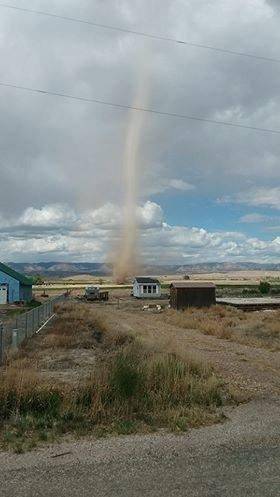After a recent sighting of a dust devil in Miller Creek over the weekend, confusion arose about whether it was a small tornado or large dust devil.
Many throughout the Castle Country are accustomed to witnessing dust devils, but normally not of this size, easily mistaking it for a small tornado. So, what is the difference between a dust devil and a tornado?
According to the American Meteorological Society (AMS), a dust devil is defined as, “a well-developed dust whirl; a small but vigorous whirlwind, usually of short duration, rendered visible by dust, sand, and debris picked up from the ground.” A tornado, in turn, is defined as, “a rotating column of air, in contact with the surface, pendant from a cloud, and often visible as and/or circulating debris/dust at the ground.”
The key factor is deciphering between the two is where the twister originates from. A tornado must originate from clouds. If the vortex extends from the ground to the funnel at the base of the cloud, it is then classified at a tornado. In comparison, dust devils originate from a whirlwind on the ground and typically do not grow very big.
Although dust devils and tornadoes have apparent differences, is it still possible for a dust devil to become a tornado? If a storm’s updraft moves over the the existing ground circulation, the updraft from the storm can draw the dust devil toward the base of the cloud.

